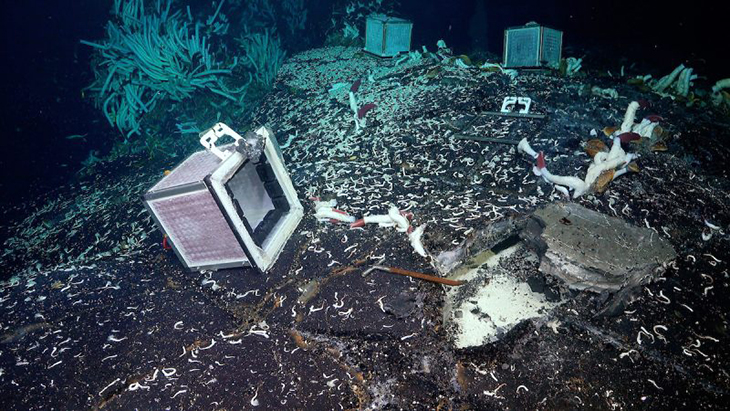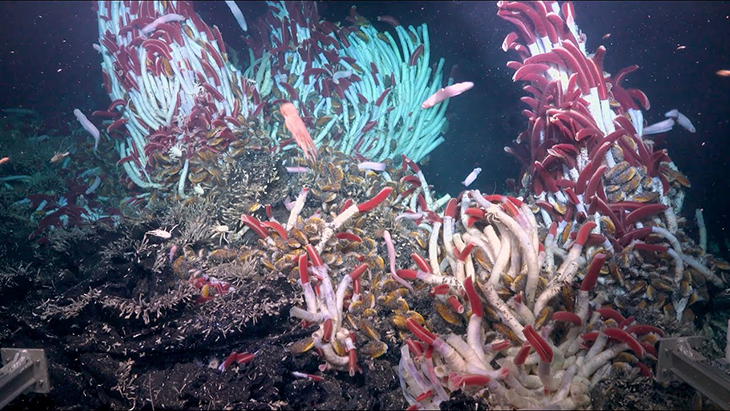
Exploration and mapping of deep-sea life have made remarkable advancements in the past two decades, yielding invaluable discoveries, such as this recent revelation by the Schmidt Ocean Institute regarding life thriving beneath undersea volcanic vents.
Located at a well-studied undersea volcano along the East Pacific Rise near Central America, an international consortium of marine biologists and oceanographers has unveiled hidden ecosystems harboring worms, snails, and bacteria beneath the ocean floor.
Leveraging an underwater robotic vehicle, the scientific team uncovered sections of volcanic crust, unveiling these slender subterranean cave systems. These caves serve as passageways for various animals, introducing a novel dimension to hydrothermal vents, demonstrating that their habitats extend both above and below the seafloor.
“On land we have long known of animals living in cavities underground, and in the ocean of animals living in sand and mud, but for the first time, scientists have looked for animals beneath hydrothermal vents,” Jyotika Virmani, the institute’s executive director, said.
“This truly remarkable discovery of a new ecosystem, hidden beneath another ecosystem, provides fresh evidence that life exists in incredible places.”
Hydrothermal vents are captivating submerged hubs of biodiversity. While corals serve as the cornerstone organisms of reefs, tube worms play a similar role in the hydrothermal vent ecosystems. Interestingly, despite their vital importance, the reproductive activities of young tube worms have remained enigmatic, prompting some scientists to speculate that they might navigate beneath the vents for this purpose.
To investigate whether these worms or other marine creatures traverse through the vent fluids, a team of researchers employed the Schmidt Ocean Institute’s underwater robot, ROV SuBastian, to conduct experiments. They affixed mesh boxes securely over crevices in the Earth’s crust and introduced a harmless red pigment into the mesh enclosure, which colored all the resident animals.

After several days, when the boxes were removed along with the crust, observers witnessed the emergence of uncolored animals residing beneath the surface in hydrothermal cavities. This discovery bears resemblance to other explorations of life in the ocean’s profound realms, which remain largely uncharted due to their remote locations.
Recently, an expedition off Australia’s Cocos Keeling Islands delved into the undersea volcanoes, revealing a remarkable array of exotic and fascinating species.
The mysteries of deep-sea coral reefs continue to elude comprehension. A recent discovery unveiled a thriving ecosystem 2,000 feet below the surface in the marine protected area of the Galapagos Islands.
In 2020, the British Antarctic Survey embarked on a submersible mission beneath the Antarctic shelf, where they promptly documented 36 previously unknown species in a single boulder, marking a significant scientific breakthrough.
“The discoveries made on each Schmidt Ocean Institute expedition reinforce the urgency of fully exploring our ocean so we know what exists in the deep sea,” Wendy Schmidt said. She is the president and co-founder of Schmidt Ocean Institute. “The discovery of new creatures, landscapes, and now, an entirely new ecosystem underscores just how much we have yet to discover about our Ocean–and how important it is to protect what we don’t yet know or understand.”
What are your thoughts? Please comment below and share this news!
True Activist / Report a typo


